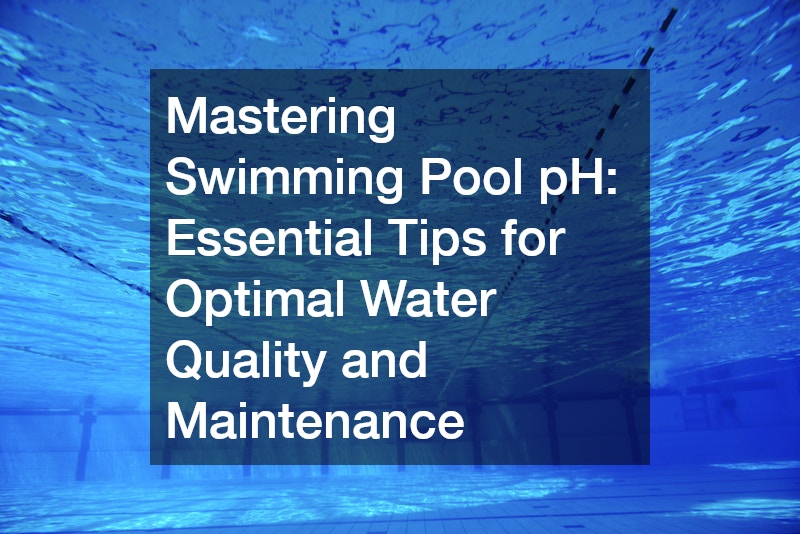Maintaining the ideal swimming pool pH is crucial for ensuring your pool’s water remains clean, clear, and comfortable. The pH level of your pool water determines its acidity or alkalinity and plays a vital role in the overall health of the pool. By mastering swimming pool pH, you can enhance water quality, prolong the life of your pool equipment, and ensure a pleasant swimming experience.
Understanding Swimming Pool pH
The term”pH stands for “potential of hydrogen” and it measures how acidic or basic your pool water is. The pH scale ranges from 1 to 14, with 7 being neutral.
Anything below 7 is considered acidic, while values above 7 are basic or alkaline. For swimming pools, the ideal pH range is between 7.2 and 7.8. Maintaining your swimming pool pH within this range helps ensure the water is neither too acidic nor too basic.
Why pH Matters
Your swimming pool pH significantly impacts the effectiveness of your pool’s sanitizer, such as chlorine. If the pH is too high, chlorine becomes less effective, leading to cloudy water and potential algae growth. Conversely, a pH that is too low can cause corrosion of pool equipment, damage to the pool’s surface, and irritation to swimmers’ eyes and skin. Properly balancing the pH prevents these issues and helps keep your pool water safe and comfortable.
Tips for Maintaining Ideal Swimming Pool pH
Regular Testing: Regularly testing your pool water is the first step in maintaining optimal swimming pool pH. Use a pool testing kit or test strips to measure the pH level at least once a week. For newly filled or recently treated pools, testing more frequently may be necessary until you establish a stable pH balance.
Adjusting pH Levels: If your swimming pool pH is out of the ideal range, you’ll need to adjust it. To increase pH, add a pH increaser such as soda ash or baking soda. These substances raise the pH level and can also improve the pool’s total alkalinity. Conversely, if your pH is too high, use a pH decreaser like muriatic acid or sodium bisulfate. These acids lower the pH and help prevent scale formation and other problems.
Maintain Total Alkalinity: Total alkalinity acts as a buffer for pH, helping to keep it stable. Aim to maintain your pool’s total alkalinity between 80 and 120 parts per million (ppm). This will help prevent sudden pH changes and make it easier to manage your pool’s water chemistry.
Control Contaminants: Organic contaminants such as leaves, insects, and even swimmer’s sweat can affect your swimming pool pH. Regularly skimming debris from the water, using a pool cover, and ensuring proper filtration can help reduce the impact of these contaminants.
Monitor and Adjust Regularly: The pH level in your pool can fluctuate due to various factors, including weather conditions, pool usage, and chemical treatments. Regular monitoring and adjustment are key to maintaining a balanced swimming pool pH. Pay attention to how your pool reacts to different conditions and make adjustments as needed to keep the pH within the ideal range.
Conclusion
Mastering swimming pool pH is essential for maintaining clean, safe, and enjoyable pool water. By understanding the importance of pH, regularly testing your water, and making timely adjustments, you can ensure your pool remains in top condition. With these essential tips, you’ll be well on your way to optimal water quality and a well-maintained swimming pool.
.

